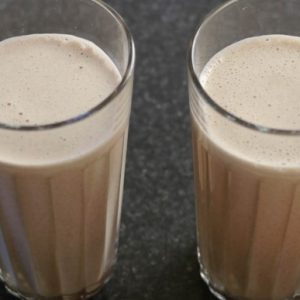Ketosis is the situation in which ketones are voided in the urine. It takes place within a few hours of blood glucose stabilising and no glucose entering from the diet. At this point many of the body-structures, such as the brain and deep dense tissues like cartilage and tendon will still require glucose and will not take up the ketone byproducts of fat metabolism. So the excess ketones are voided and the necessary glucose is obtained from glycerol and liver glycogen. If carbs continue in small amount, this condition will persist. If however carbs do not reappear in the diet, then the body begins to adapt to using the ketones as food hence the term Keto-adaptation. During the period of adaptation, energy levels are subjectively low. As the body begins to run most of the glucose-dependent tissues on ketones, energy increases several fold and some additional benefits are realised, such as a lack of ‘hunger pangs’, increased endurance time, increased strength, a feeling of well-being, and rapid bodyfat loss. Keto-adaptation takes time, from a very minimum of about 2 weeks in a very remarkable person, to from three to six weeks in most people. This is a very hard but very important first hurdle to overcome in getting comfortable in the all-meat dietary path (read more about this keto flu).

In-Ketosis
The point of a keto diet is to be in ketosis – what this means is that your body is breaking down fat at such a rate that there are ketones in your bloodstream. This happens after fasting, or with a low carb diet. It’s a normal metabolic state. If you’ve ever had steak and veggies for supper and then had eggs for breakfast (or skipped it all together), you’ve been in ketosis. In this video Attia explains how glycogen is used differently when in a state of ketosis.
It’s also important to note that your body burns whatever fuel is available – glucose, FFA (free fatty acids), ketones, alcohol. Whatever there is more of is what it burns more (which is why alcohol “pauses” ketosis, your body will burn up the alcohol first).
Zero carb diet does NOT cause ketosis.
Keto-Adapted
“Keto-adapted” is not a clinical or medical term, and different people use it in different ways. Everyone thinks that their way is the right way, but the few times I have seen definitions from different reliable sources, the definitions themselves have varied. A large part of the confusion from the term “keto-adapted” stems from the fact that it is not actually a concretely defined term like “ketosis.” Different experts and even more so different non-experts use the term to mean different things.
The most frequently used and reasonable definition for “keto-adapted” seems to be “when your body is used to using ketone bodies for energy”. The body rapidly adapts within a few weeks and begins consuming the ketones from fat metabolism. A fully keto-adapted body excretes no ketones in the urine. A metabolic by product, ‘ketone bodies’ are actually a special kind of carb, and they substitute for glucose at the structures which use it. They have the added advantage of making you feel good- and well bed. What this means at a chemical/metabolic level remains unclear, and to make matters worse there seems to be disagreement as to when this happens, the inner and outer signs of its occurrence, etc. Is it in 2-3 weeks when athletic performance returns to full? If you’re not an athlete, how do you know when/if you’re keto-adapted? Is it a few days after you start, when you’re done with the “keto-flu” (another rather vague term that doesn’t apply to everyone and causes some confusion)?
Different enzymes are involved for breaking down fat than breaking down glucose. When you first enter ketosis, you are using fat for energy, but at first it’s in limited amounts because you don’t have as many fat-converting enzymes. These get built up over time. This is what causes the tiredness at the beginning of the diet. Once the enzymes are in place, your cells change the way they get energy. It’s really amazing all the changes that have to happen internally for keto-adaptation to happen. It’s like you can’t just put diesel into a regular car engine and expect everything to work smoothly.
Once you are keto-adapted (which can take a few weeks to a month depending on the person), fat/ketones becomes the preferred fuel. Hormone levels are changed, glycogen (glucose stored in muscles and liver) is lowered, you carry less excess water. You’re able to function well – lots of energy, you can exercise, lift, build up endurance etc.
When you’re keto adapted and get an “overdose” of carbs (more than your body needs at the time) different things happen. First, glycogen gets replenished, which causes water retention. Secondly, insulin rises, which can affect other hormone levels as well. While your body processes the carbs, you are not burning ketones. Once the glucose is dealt with, you will go back into ketosis. When you’re keto adapted, this doesn’t take long because you already have the enzymes and are “primed” to use fat for energy.
When you’re starting keto, the more often you have sugar, the longer it takes to become keto adapted. When you are keto adapted, sugar will will still take precedence over fat for fuel (because excess blood sugar is fatal and so your body needs to handle the sugar first).
If your goal is weight loss, excess glucose is counter productive. There is no “need” for a carb up, even with endurance sports, but some people find the boost helpful depending on their goals.
Measuring
Ketostix will measure excess ketones that are in your urine. However they are not the be all and end all of being in ketosis. If you are using all your ketones for energy, or if you’re getting rid of the excess through sweat or saliva, ketostix may be negative.
Other way to measure the effects of ketoadaptation is to look at your respiratory quotient while exercising. It will stay lower (close to 0.70, fat burning) as the intensity rises. However, you can’t pee on a stick or take a tiny blood sample to measure this. You need a setup like this. And you’ll need to test before and after ketosis to measure the change.
The best way to check for ketones is a blood ketone meter (which I hear are not expensive but the test strips are). Jimmy Moore (of Livin La Vita Low Carb) did an experiment monitouring his levels (one of his posts is here)

















